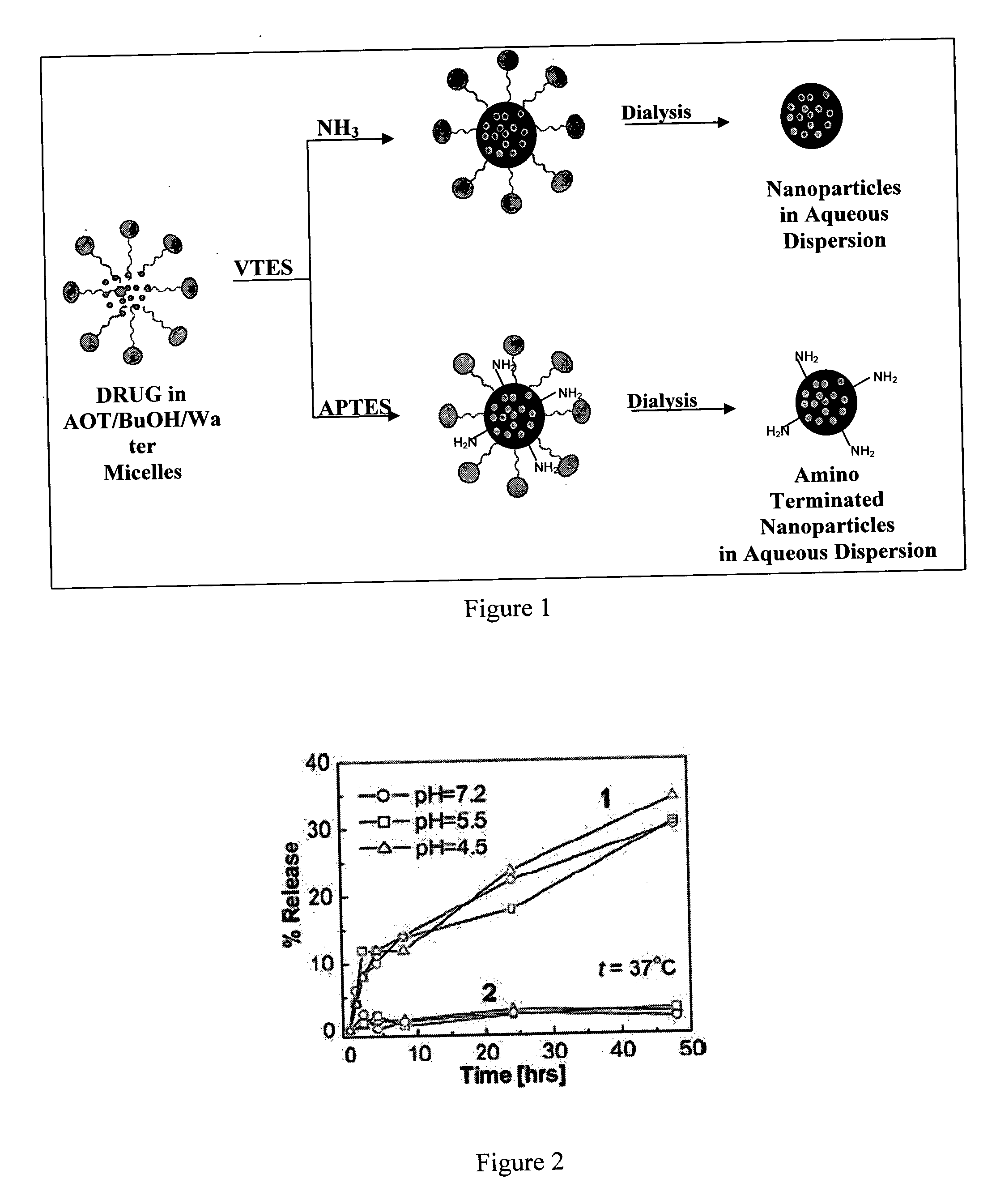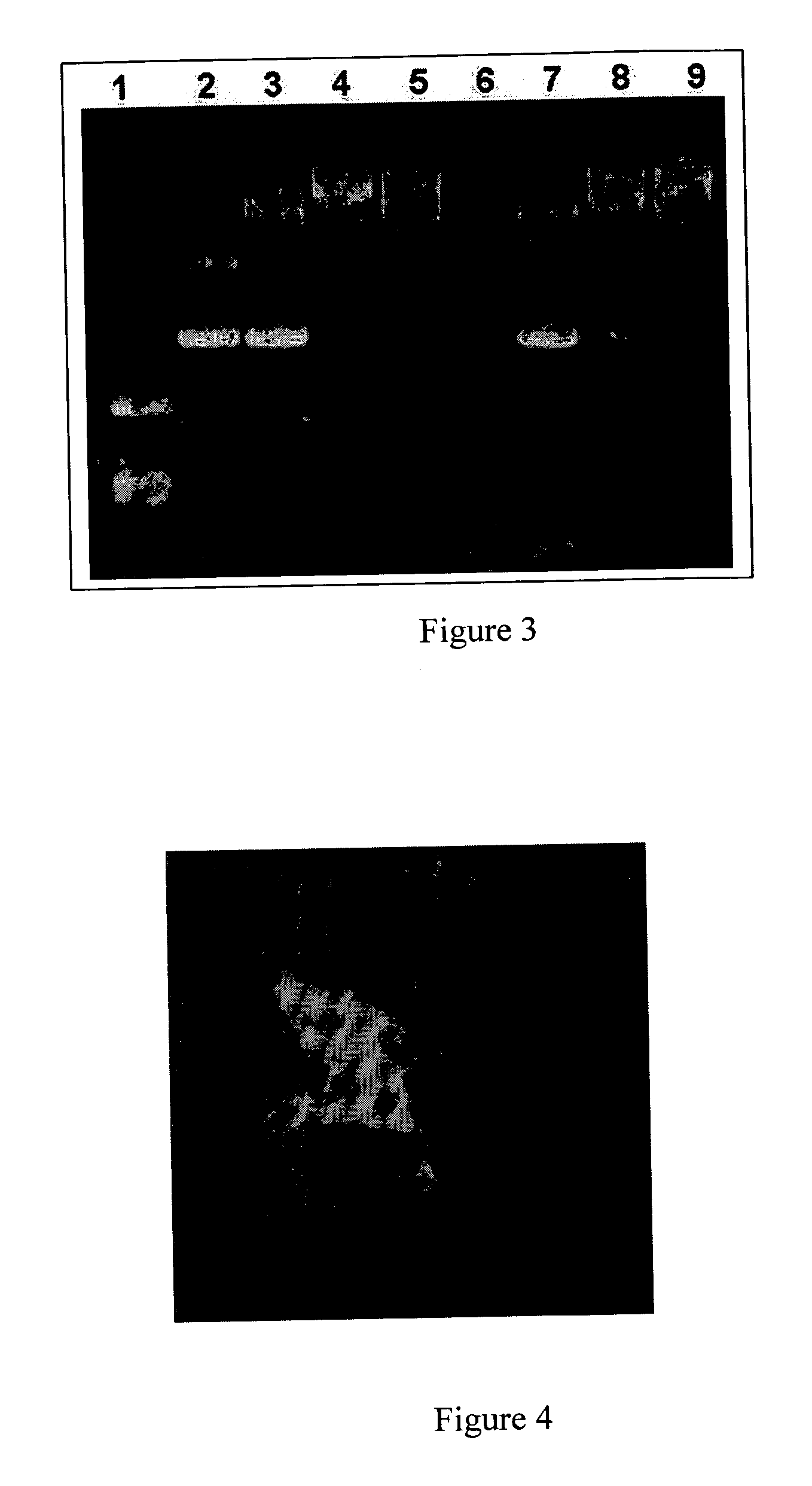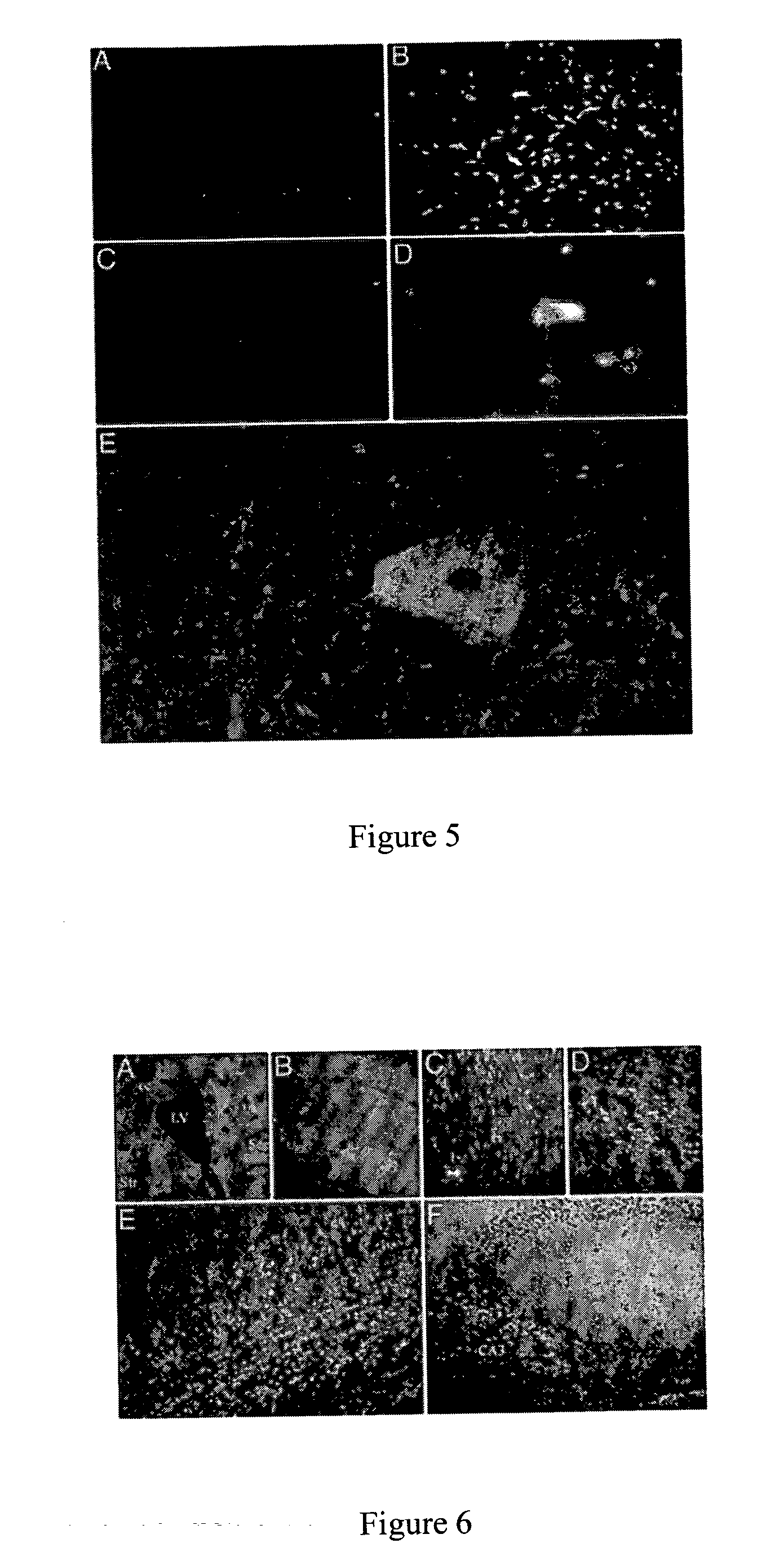Amino functionalized ORMOSIL nanoparticles as delivery vehicles
a technology of ormosil nanoparticles and nanoparticles, which is applied in the direction of capsule delivery, microcapsules, and generic material ingredients, etc., can solve the problems of halting the use of viral vectors for gene transfection, difficult to produce stable strains of harmless viruses, and virus behavior that is very unpredictabl
- Summary
- Abstract
- Description
- Claims
- Application Information
AI Technical Summary
Benefits of technology
Problems solved by technology
Method used
Image
Examples
example 1
Synthesis and Characterization of Drug-Loaded Silica-Based Nanoparticles
[0034] The nanoparticles were synthesized in the non-polar core of AOT / DMSO / water micelles. Typically, the micelles were prepared by dissolving a fixed amount of AOT and 1-butanol in 20 mL of double distilled water by vigorous magnetic stirring. Then, 200 μl of neat triethoxyvinylsilane was added to the micellular system, and the resulting solution was stirred for ˜30 minutes. The ORMOSIL nanoparticles were then precipitated by adding aqueous ammonia solution or 3-aminopropyltriethoxysilane and stirring for about 20 hours. The entire reaction is carried out at room temperature.
[0035] During the synthesis, when ammonia is used to condense VTES, non-amino terminated nanoparticles form (e.g. 3ORM2N2) and when APTES is used to condense VTES, amino-terminated (amino functionalized) ORMOSIL nanoparticles form (e.g 3ORM2A2). The nanoparticles are termed herein as ORMOSIL, irrespective of whether they are amino-termi...
example 2
Elemental Analysis (XPS)
[0039] For elemental analysis of solid samples, the nanoparticles in aqueous dispersion (after dialysis) were centrifuged and dried in an oven (1 hour at 80° C.). The dried samples were crushed to fine powder and were spread on a sample holder. A Physical Electronics Model (Perkin Elmer) 5300 X-Ray Photoelectron Spectrometer (XPS) was used for the elemental analysis of the sample. X-rays were generated with MG and Ti targets while ejected electrons were analyzed with a hemispherical analyzer. Data analysis is performed on a Pentium II 350 MHz computer connected to the instrument with a RBD manufactured interface control. The results of this analysis are shown in Table 2.
TABLE 1AOTnBuOHWaterDMSO*VTESNH3APTESDiameterName(g)(μL)(mL)(μL)(μL)(μL)(μL)(nm)3ORM2N200.336002010020020—10-153ORM2A200.3360020100200—2010-154ORM2N20 or0.448002010020020—15-20ORMN204ORM2A20 or0.4480020100200—2015-20ORMA204ORM2A40 or0.4480020100200—4015-20ORMA404ORM3N200.448002010030020—25...
example 3
Determination of Entrapment Efficiency and Release Kinetics of Rh6G and HPPH from ORMOSIL Nanoparticles.
[0042] To quantify the encapsulation of amphiphilic and hydrophobic dyes, we performed a study of entrapment efficiency and release kinetics of an amphiphilic dye (Rh6G) and a hydrophobic dye (HPPH) from ORMOSIL nanoparticles. In a typical experiment, an aliquot of 500 μl of ORMN20 solution encapsulating Rh6G or HPPH was filtered through microcentrifuge filter device membranes (100-kDa cutoff) to separate the free dye from the nanoparticles. The amount of dye present in the filtrate was determined spectrophotometrically at the wavelength of absorption peak. The entrapment efficiency and release kinetics were determined by using the values for the total concentration of a dye in the system and in the filtrate, as described in ref.
[0043] We investigated the release kinetics of two types of ORMOSIL-encapsulated dyes having similar molecular weights, an amphiphilic dye (Rh6G) and a...
PUM
| Property | Measurement | Unit |
|---|---|---|
| Diameter | aaaaa | aaaaa |
| Diameter | aaaaa | aaaaa |
| Diameter | aaaaa | aaaaa |
Abstract
Description
Claims
Application Information
 Login to View More
Login to View More - R&D
- Intellectual Property
- Life Sciences
- Materials
- Tech Scout
- Unparalleled Data Quality
- Higher Quality Content
- 60% Fewer Hallucinations
Browse by: Latest US Patents, China's latest patents, Technical Efficacy Thesaurus, Application Domain, Technology Topic, Popular Technical Reports.
© 2025 PatSnap. All rights reserved.Legal|Privacy policy|Modern Slavery Act Transparency Statement|Sitemap|About US| Contact US: help@patsnap.com



